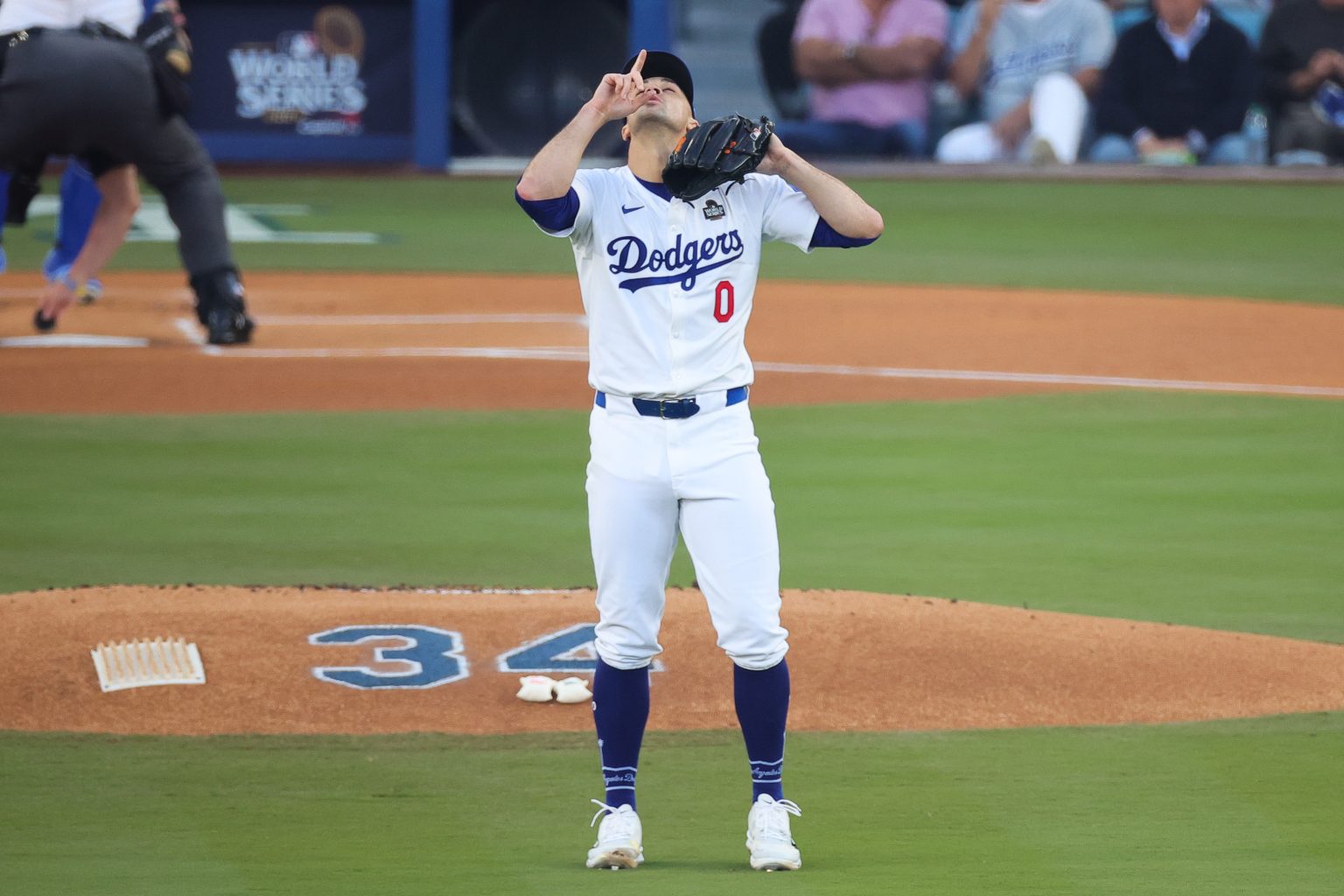The San Francisco Giants, initially projected as frontrunners to acquire starting pitcher Corbin Burnes, are now exploring alternative options after Burnes became unattainable and their pursuit of Blake Snell was thwarted by the rival Los Angeles Dodgers. As the Giants seek to bolster their rotation, they find themselves in a position to potentially return the favor, potentially poaching a starting pitcher from the Dodgers themselves. The target in question is Jack Flaherty, a free agent who concluded the 2024 season with Los Angeles and is projected to command an $80 million contract in the upcoming offseason. This potential acquisition presents the Giants with an opportunity to not only strengthen their pitching staff but also strategically weaken a divisional rival.
Flaherty’s performance in the 2024 season, marked by a 3.17 ERA across 28 starts and an impressive 194 strikeouts in 162 innings, split between the Detroit Tigers and the Dodgers, makes him an attractive option for the Giants. His strong finish with Los Angeles, showcasing his capabilities in high-pressure situations, positions him as a valuable asset for any team seeking to bolster their postseason rotation. While acknowledging that Flaherty might not reach the same echelon as Snell or Burnes, his durability, age (29), and impressive strikeout ability make him a compelling candidate, particularly in the context of the remaining free-agent market. For the Giants, Flaherty represents a viable and potentially more cost-effective alternative to pursuing high-profile trade targets.
The Giants’ pursuit of Flaherty serves as a strategic response to the evolving landscape of the starting pitching market. Having lost out on both Snell and Burnes, the Giants find themselves needing to recalibrate their approach. Acquiring Flaherty not only addresses their need for a reliable starter but also allows them to do so without sacrificing the significant prospect capital that would be required to acquire pitchers of comparable caliber via trade, such as Dylan Cease or Luis Castillo. This approach allows the Giants to maintain their organizational depth while still bolstering their immediate pitching needs.
The potential acquisition of Flaherty also carries a symbolic weight, mirroring the Dodgers’ acquisition of Snell from the Giants. By potentially luring Flaherty away from Los Angeles, the Giants would not only acquire a valuable pitcher but also deliver a strategic blow to their rivals, weakening their rotation and potentially altering the balance of power within the National League West. This move would resonate beyond the immediate impact on the Giants’ pitching staff, serving as a statement of intent and a demonstration of the team’s commitment to competing at the highest level.
Flaherty’s potential move to San Francisco underscores the fluid dynamics of player movement within Major League Baseball. The offseason often presents unexpected opportunities for teams to reshape their rosters and address areas of need. In this case, the Giants, having initially missed out on their primary targets, find themselves in a position to capitalize on the availability of a talented pitcher who recently played for a divisional rival. This potential acquisition highlights the strategic importance of adaptability and the ever-present opportunity for teams to leverage player movement to their advantage.
In conclusion, the San Francisco Giants’ pursuit of Jack Flaherty represents a pragmatic and potentially impactful move. While Flaherty may not possess the same star power as the Giants’ initial targets, he offers a compelling combination of experience, durability, and strikeout ability. Furthermore, acquiring Flaherty allows the Giants to address their pitching needs without depleting their farm system, preserving their future while strengthening their present. The potential to simultaneously bolster their own rotation and weaken a direct competitor adds another layer of strategic significance to this pursuit. The Giants’ pursuit of Flaherty underscores the importance of adaptability in the competitive landscape of Major League Baseball and their commitment to remaining competitive in the National League West.

